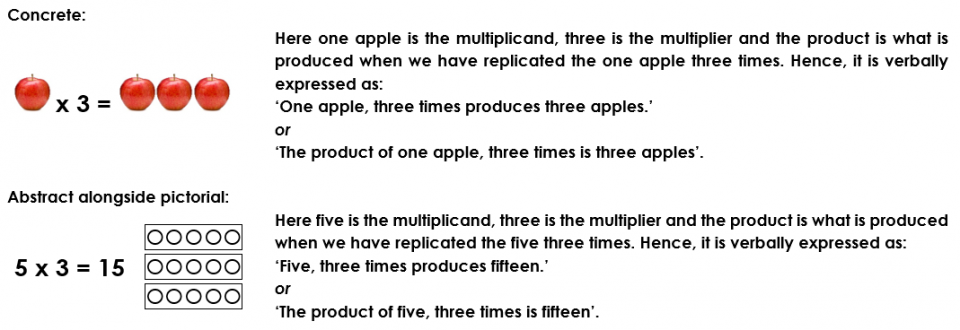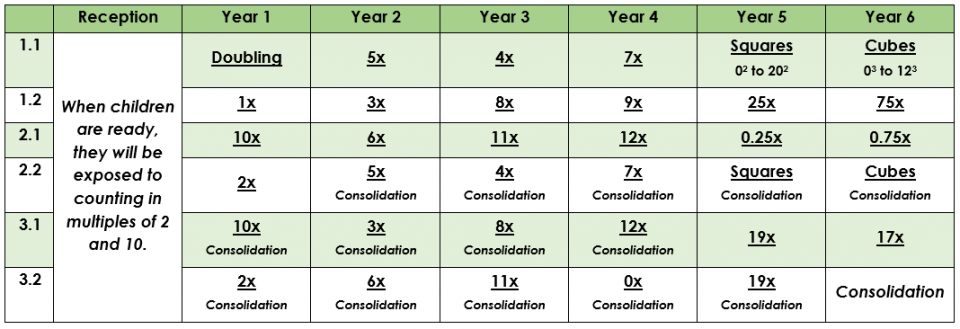Vision Statement
All learners have the capability to develop a foundation for understanding the world, with an ability to reason mathematically, appreciate the beauty and power of mathematics and a sense of enjoyment and curiosity about the subject.
~ National Curriculum 2014
At Hethersett Woodside, we believe that children should leave primary education as confident, resilient mathematicians with a deep conceptual understanding of the skills required to approach any maths problem. All stakeholders are invested in enabling our children to see themselves as mathematicians with a positive attitude towards the learning of mathematics and an enjoyment of the challenge it can pose. We want all children to aspire to be complete mathematicians who not only learn to solve problems but also value the journey to the answer and are fluent and confident in their reasoning. Our mission is to enable all learners to enjoy and succeed in mathematics.
We understand that maths is a lifelong skill and discipline that children will continue to need to use throughout their school lives and beyond. Therefore, we want learners to think about maths beyond what is tested in national examinations and to be equipped with an understanding of mathematics that will be relevant and useful in their future studies and in the world of work. We recognise the importance of STEM within the world we live and how Mathematics is woven through many other subjects. As such, we understand that a deep grasp of mathematics is essential to enabling greater social equity and mobility.
The aims of our Mathematics curriculum is:
- To make the teaching and learning of Mathematics an enjoyable and satisfying experience which inspires confidence in the subject.
- To develop in our children a Growth Mindset and positive attitudes towards Mathematics.
- For our children to become confident and proficient with number, including fluency with mental calculations and look for connections between numbers.
- For our children to become problem solvers, who can reason, think logically, work systematically and apply their knowledge of mathematics.
- To develop our children’s use of mathematical language.
- For our children to become independent learners, with the skills needed to work co-operatively with others.
- For our children to appreciate real life contexts to learning mathematics.
- To give our children the knowledge and skills to prepare them for what comes next in their lives.
Teaching and Learning
We teach Mathematics using a Mastery approach. The rationale behind our approach lies within the NCETM Maths Hub Programme, as well as the 2014 Curriculum which states:
- The expectation is that most pupils will move through the programme of study at broadly the same pace.
- Pupils who grasp concepts rapidly should be challenged through being offered rich and sophisticated problems before any acceleration through new content.
- Those who are not sufficiently fluent with earlier material should consolidate their understanding through additional practice, before moving on.
We have developed our own ‘Curriculum for Depth’, taking the National Curriculum as a starting point and enhancing it. As a spiral curriculum, we return to key domains of Mathematics each term to further develop and deepen the children’s understanding. At the heart of our curriculum are the following ‘Teaching for Mastery’ principle:
- It is achievable for all – we have high expectations and encourage a positive ‘can do’ mindset towards mathematics in all pupils, creating learning experiences which develop learner’s resilience in the face of a challenge and carefully scaffolding learning so everyone can make progress.
- Deep and sustainable learning – lessons are designed with careful small steps, questions and tacks in place to ensure the learning is not superficial.
- The ability to build on something that has already been sufficiently mastered – the learning of concepts is seen as a continuum across the school.
- The ability to reason about a concept and make connections – learners are encouraged to make connections and spot patterns between different concepts and use precise mathematical language, which frees up working memory and deepens conceptual understanding.
- Conceptual and procedural fluency – teachers move mathematics from one context to another (using objects, pictorial representations, equations and word problems). There are high expectations for learners to learn times tables, key number facts (so they are automatic) and have a true sense of number. Learners are also encouraged to think whether their method for tackling a given calculation or problem is Appropriate, Reliable and Efficient.
- Problem solving is central – this develops learners’ understanding of why something works so that they truly have an appreciation of what they are doing rather than just learning to repeat routines without grasping what is happening.
- Challenge through greater depth – rather than accelerated content, (moving onto next year’s concepts), teachers set tasks to deepen knowledge and improve reasoning skills within the objectives of their year group.
The expectation at Woodside is that all pupil will move through age appropriate mathematical content together. All learners benefit from the emphasis on oral and mental work, as well as participating in watching and listening to other learners demonstrating and explaining their methods. Aiming to develop Growth Mindsets, pupils are not grouped by ability nor are any pre-assumed judgements made about their ability to achieve.
The same tasks are provided to the whole class. Those pupils who require more support will be identified through careful Assessment for Learning (AfL) and given this support through 1:1 or small group teaching immediately after the initial teaching input. For these pupils, they may require longer using the concrete resources provided or will only be able to tackle the task at a shallow level. Some pupils will inevitably grasp concepts more quickly and these learners will be expected to demonstrate a deeper understanding, being able to clearly explaining and justifying what they know and how they can prove it to other.
It is fundamentally important that gaps are prevented from opening and that all children, regardless of previous attainment, feel able to draw on this support when required.
INCLUSION
Hethersett Woodside Primary and Nursery School aims to meet the needs of all. SEN pupils may be supported by additional adults, different resources and/or differentiated activities. In some cases, for those whose difficulties are severe or complex, they may need to be supported with an individualised programme in the main part of the lesson.
Multiplication Bonds
Intent
At Hethersett Woodside we believe that it is important that children are given the opportunity to see, explore, and understand the mathematical structures and patterns of multiplication bonds (times tables) for real deep, embedded learning. We want our children to know their multiplication bonds really well and through developing a deep conceptual understanding alongside the ability to recall, they will be able to apply them confidently, including the inverses.
Multiplication bonds are fundamental to many maths topics (for example, fractions and algebra) and calculation strategies (for example, short multiplication, long multiplication, short division and long division), requiring children to be able to carry them out quickly and with a degree of automaticity. With nearly 60% of GCSE topics being traced to a root in multiplication bonds, we aim to provide solid foundations for their next stage of education. Being fluent in multiplication bonds means that working memory is freed up, which in turn reduces the cognitive load and leaves space to explore new mathematical ideas, reason and solve more complex problems.
Implementation
Use of Language
At Woodside we believe that deep understanding of a mathematical concept happens through a CPA approach. Therefore it is essential that we use the correct language when reading and writing multiplication calculations. Whilst there is not the expectation to use this with the children, the correct terminology is:
multiplicand x multiplier = product
As the multiplicand refers to a quantity which is multiplied by another, the multiplier, we teach multiplication as a quantity (the group size) and the number of times we need it. The below examples represent this:

Through the correct use of language, we are preparing our children for more abstract concepts. In particular, the links with algebra where children will be exposed to expressions like 6n, where 6 is the constant and n is the variable.
Progression of Teaching
The following table shows which multiplication bonds will be taught per half term. For each set of multiplication bonds (Years 1 to 4), children will learn the facts for the multipliers 0 to 12. In Years 5 and 6 children will learn the multiplication facts for the multipliers 0 to 10. This is because we aspire that as children develop fluency with multiplication they will be able to use the distribution law to work out further multipliers, for example 12 x 19 = (10 x 19) + (2 x 19).

Learning Sequence
Recognising the importance of children being able to efficiently calculate or retrieve their multiplication bonds, we know that children need a combination of direct teaching alongside regular and frequent practice. In each class, a whole half term is devoted to a new multiplication bond. Following a project carried out by the South East London Maths Hub, Jenny Field explained that the reason for focusing on one multiplication table per half term is due to neuro plasticity.
…the formation of a new neural pathway takes approximately eight-ten weeks. This time allows for the early formation of a myelin sheath around this pathway which contributes to automaticity – making it a ‘go to’ place for recall. Article for Reference
Within each half term, three lessons are devoted to exploring the new multiplication table – developing connections, exploring patterns and creating a deeper understanding of multiplicative reasoning with specific focus on the new multiplication bonds. As the new table is introduced, class teachers will systematically build it together with the children using the bonds that they already know and have met before. Teachers and children will also make clear conceptual links to the real world, creating a half termly display of ‘What comes in…’ that will be part of their Maths Working Wall. The first two lessons of direct teaching will be allocated at the start of each half term, and the final one will be placed later in the half term, at a time chosen by the class teacher.
Once the new multiplication table has been introduced for the half term, three or more times a week in every class there will be a five- to ten- minute ‘retrieval practice’ session. During these one or more activities will be used that include conceptual support; full verbal patterning (saying whole calculation) and also step counting, and learning the multiplication facts in order then out of order. Saying the full verbal pattern aloud supports the process of storing facts into our verbal memory. In the above article, Jenny Field stated ‘An emphasis on saying (and hearing) the sound pattern of the phrase is important and can lead to verbal prediction and patterning – however this practice can and should include conceptual support.’
For further information, please read our Multiplication Bonds Overview.

